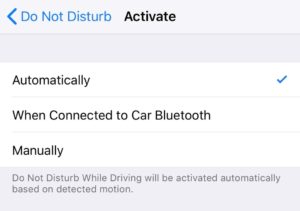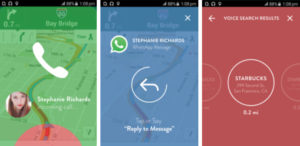Disclaimer :: Patterson Law Group sponsored this post and provided helpful information about tools to discourage distracted driving among teens.
Distracted driving is a growing epidemic. According to the NHTSA, more than 390,000 individuals are injured in distracted-driving-related accidents every year, and more than 480,000 passenger vehicles are operated by a distracted driver on any given day. In the state of Texas alone, roughly 2,108 distraction-related crashes occur every week.
Teens are extremely susceptible to distractions while behind the wheel, and their relative inexperience as new drivers only increases the risk of an accident.

It’s important for parents to teach their teens about the dangers of distracted driving, but it’s clear that a simple talk may not cut it. The distracted driving epidemic is a problem that will require some out-of-the-box thinking to solve. Thus, unique learning approaches and experiences may be the key to helping your child avoid distraction. Thankfully, there are a number of unique ways to capture your teen’s attention and provide meaningful lessons on the dangers of phone use and other distractions while behind the wheel.
 An Educational Video Game
An Educational Video Game
Sometimes talks and PSA videos aren’t enough to cement a lesson, especially for hands-on learners. A video game can go a step beyond a flashy animation or a one-on-one talk by providing a lesson through the valuable lens of experience. Distracted Driving: The Game is a free online game that puts your teen in the driver’s seat without putting him or her in harm’s way.
The player must steer the car while also swiping away distractions such as texts and food that pop up and block the driver’s view (much like in real life). A timer counts how long the driver lasts before wrecking the car. Your teen will quickly come to understand you can’t last long on the road while multi-tasking behind the wheel.
Considering 72 percent of teens play video games, this medium may be the best way to reach your teen. The game is simple and easy to pick up for parents, teachers, and teens alike.
 Flip On Do-Not-Disturb Settings
Flip On Do-Not-Disturb Settings
Notifications are specifically designed to attract our attention and are therefore inherently dangerous while driving. Apple iPhone users have a built-in do-not-disturb mode that users can toggle to automatically activate while driving. If enabled, the phone will detect when an individual is driving and keep the phone screen dark without any notifications while the car is in motion.
Anyone who sends a text will receive an automatic reply that the owner is behind the wheel at the moment. The feature can be turned on by going to Settings>Do Not Disturb (see screen shot). Unfortunately, Android users do not have a standard feature they can enable, but they can install an app called Driving Detective to achieve the same do-not-disturb functionality.
Parents can help their teens either turn on the do-not-disturb feature or install Driving Detective to keep their children safe behind the wheel. Without the sounds, light, or movement emitted from a notification, teen drivers can remain focused on the road ahead and will be less tempted to reach for their devices.
Create an Allowance System for Good Driving
It’s no secret that money is one of the greatest human motivators in existence. If you’re already giving your child an allowance, you can repurpose that money to build better distraction-free driving habits. Of course, being able to reward for good driving requires the ability to monitor for good driving. Apps like DriveSafe Mode can send you alerts if your child attempts to use a phone while driving. The app will even send an alert if your child attempts to uninstall it.
Once you have a monitoring system in place, you can set a certain allowance amount to be received for a month of distraction-free driving. The investment for you will be minimal, and the habits your teen will develop will be priceless.
Lessons Should Start Now
Even if your child isn’t yet ready to be behind the wheel, the conversation on distracted driving should begin long before your teen earns a license. Like any learning activity, lessons will not be digested overnight. An earlier introduction to the risks associated with distracted driving will better prepare your teen for the dangers of the road. Consider the three approaches above, and start developing your lesson plan today.
 Anna Patterson is a partner of Fort Worth personal injury law firm Patterson Law Group. Anna is a fierce advocate for distraction-free driving and dedicates her time, both in and out of the office, to help prevent distracted driving.
Anna Patterson is a partner of Fort Worth personal injury law firm Patterson Law Group. Anna is a fierce advocate for distraction-free driving and dedicates her time, both in and out of the office, to help prevent distracted driving.
[pinterest count=”horizontal”]














